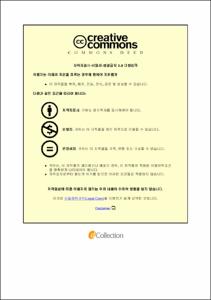해수담수화를 위한 정삼투-역삼투 융합공정에서 에너지소비량 및 탄소배출량 분석
- Abstract
- The population growth and climate change result in the global water shortage problem, which increases demands of seawater desalination. However, seawater desalination is generally an energy-intensive process and causes a large amount of carbon emission for both plant construction and operation. Osmotic dilution using forward osmosis (FO) can be a good idea to decrease the energy consumption and carbon emission by seawater desalination. Wastewater treatment plant (WWTP) effluent can be used as feed solution for FO and seawater is used as draw solution, which is diluted through FO and enters into reverse osmosis (RO) process for desalination.
One can easily expect that the introduction of FO results in the decrease in energy consumption, which is related to less carbon emission. However, the construction of FO process to reduce may cause an increase in carbon emission. In this work, we estimated the FO-RO hybrid process for seawater desalination in terms of carbon emission from both construction and energy consumption.
In order to evaluate carbon emissions, it is necessary to be able to design the FO and RO process. The RO design program is provided by the manufacturer, but there is no design program for FO. Therefore, in this study, a novel design program for FO with a prediction error of 10.01% was developed. As a result of calculating energy consumption with the FO design program and RO design program, it was calculated that the total energy consumption of the FO-RO hybrid system can be reduced up to 24.7% compared to the RO process.
As a result of calculating total carbon emission(Operation+Construction) for the 1,000 m3/d scale desalination plant, in the case of generating power using fossil fuels, the carbon emission of the FO-RO hybrid system was lower than that of the RO process. However, in the case of renewable energy and nuclear power plants, the total carbon emission of the FO-RO hybrid system was higher because the amount of carbon emission generated during energy production was less.
- Issued Date
- 2021
- Awarded Date
- 2021. 8
- Type
- Dissertation
- Publisher
- 부경대학교
- Affiliation
- 부경대학교 대학원
- Department
- 대학원 토목공학과
- Advisor
- 김수한
- Table Of Contents
- 제1장 서론 1
1.1. 연구배경 및 목적 1
1.2. 연구내용 및 구성 4
제2장 문헌연구 6
2.1. 정삼투-역삼투 융합공정 6
2.1.1 정삼투 및 역삼투 현상 6
2.1.2 해수담수화 분야에서 역삼투 공정 에너지소모량 저감 7
2.1.3 정삼투 공정 적용을 통한 에너지 저감 12
2.2. 정삼투 공정 모델 18
2.2.1 농도분극 현상 18
2.2.2 정삼투막의 성능인자 도출 방법 20
2.3. 탄소배출량 22
2.3.1 탄소배출량 개요 22
2.3.2 막여과 공정의 탄소배출량 선행 연구 사례 23
제3장 정삼투 모듈 모델 개발 26
3.1. 기본 정삼투 모듈 모델 개발 26
3.1.1 농도분극 모델 26
3.1.2 스케일업 모델의 필요성 30
3.1.3 기본 정삼투 모듈 모델(스케일업 모델) 32
3.1.4 스케일업 모델 검증 37
3.2. 정삼투 모듈 성능에 영향을 미치는 인자 분석 44
3.2.1. 정삼투 모듈 내에서 발생하는 수두 손실 44
3.2.2. 막간차압이 정삼투 모듈 성능에 미치는 영향 46
3.3. 정삼투 모듈 모델 예측 정확도 향상 50
3.3.1. Fitting과정 도입을 통한 모듈 모델 예측 성능 향상 50
3.3.2. Fitting과정을 도입한 정삼투 모듈 모델 적용성 평가 55
제4장 에너지소모량 및 탄소배출량 분석 61
4.1. 역삼투 공정의 에너지소모량 61
4.1.1. 에너지소모량 계산 방법 61
4.1.2. 역삼투 공정 설계 프로그램 63
4.2. 정삼투 공정의 에너지소모량 70
4.2.1. 정삼투 공정 설계 프로그램 개발 70
4.2.2. 설계 프로그램 검증 75
4.2.3. 에너지소모량 계산 방법 77
4.3. 정삼투-역삼투 융합공정의 탄소배출량 78
4.3.1. 에너지소모량 계산 결과 78
4.3.2. 탄소배출량 계산 방법 81
4.3.3. 탄소배출량 계산 결과 및 분석 89
제5장 결론 및 향후연구 92
5.1. 연구 결과 요약 및 결론 92
5.2. 향후 연구 방향 95
참고문헌 97
- Degree
- Doctor
- Files in This Item:
-
-
Download
 해수담수화를 위한 정삼투-역삼투 융합공정에서 에너지소비량 및 탄소배출량 분석.pdf
기타 데이터 / 2.83 MB / Adobe PDF
해수담수화를 위한 정삼투-역삼투 융합공정에서 에너지소비량 및 탄소배출량 분석.pdf
기타 데이터 / 2.83 MB / Adobe PDF
-
Items in Repository are protected by copyright, with all rights reserved, unless otherwise indicated.